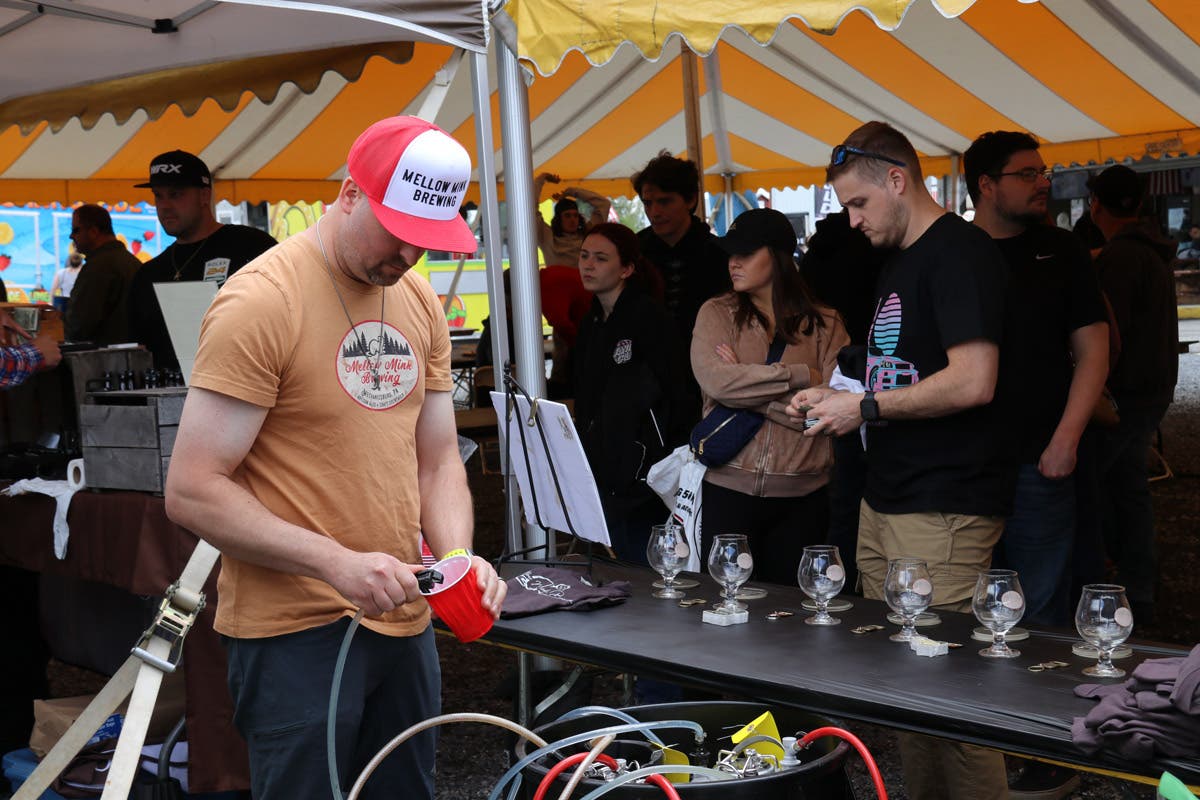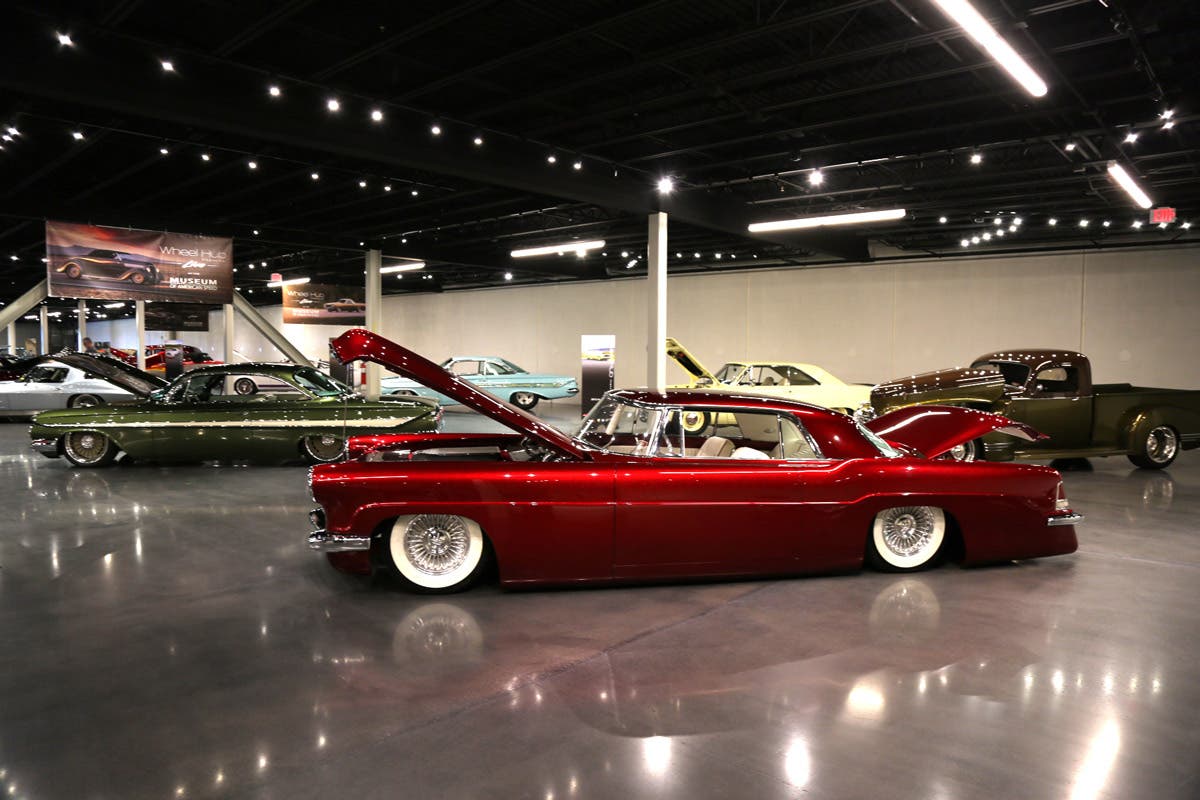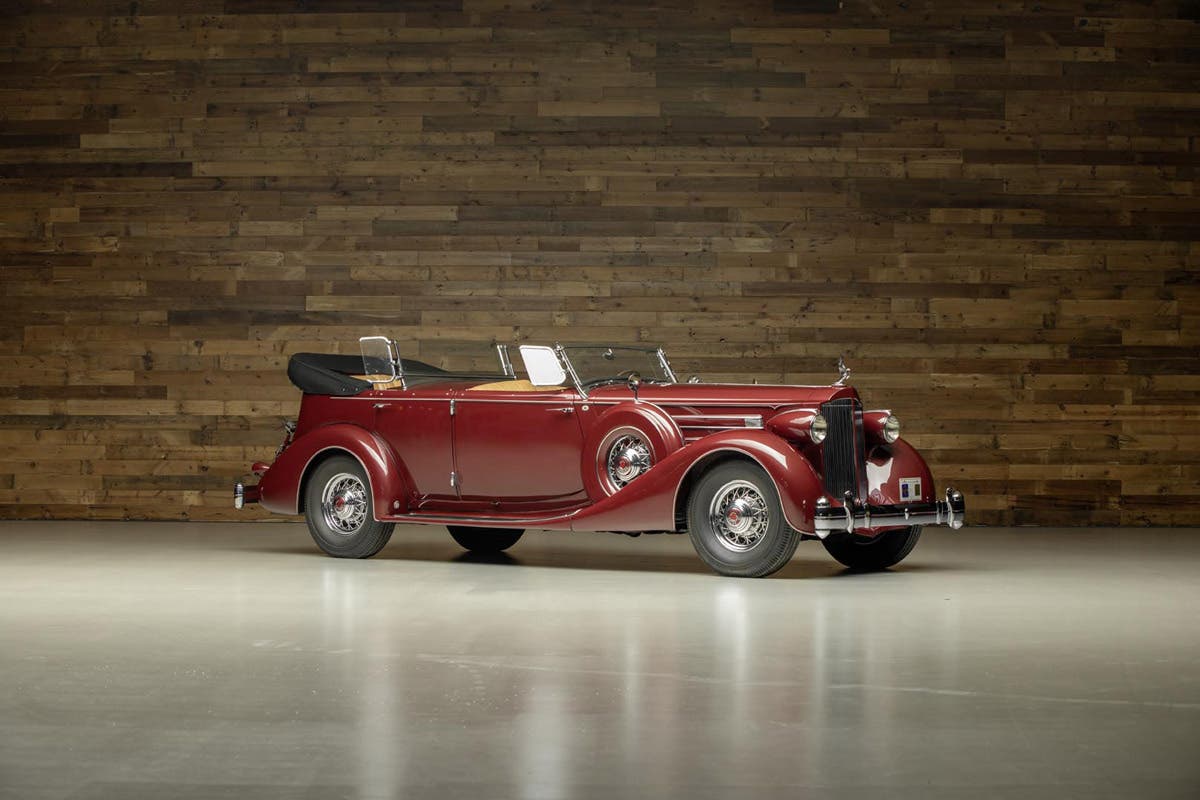Forever Fin-tastic: Cadillac Ranch still standing tall at 40
By Terry V. Boyce; photos by Wyatt McSpadden Among the man-made attractions peppering the pathway of America’s legendary Route 66 “Mother Road,” none is more iconic than Cadillac Ranch —…
By Terry V. Boyce;
photos by Wyatt McSpadden
Among the man-made attractions peppering the pathway of America’s legendary Route 66 “Mother Road,” none is more iconic than Cadillac Ranch — a “sculpture” consisting of 10 vintage Cadillacs quite literally planted in a Texas cow pasture. Sometimes called a later-day Stonehenge, Cadillac Ranch is so famous, homage has been paid to it in the animated movie “Cars,” and it has been celebrated in song by rockstar Bruce Springsteen. Old Cars broke the story of Cadillac Ranch just weeks after it was completed in 1974. In observance of the globally known art installation’s 40th anniversary, we’re revisiting its story here.
In August 1974, California publisher Ray Miller, who advertised his Evergreen Press collector car books in Old Cars, sent the staff snapshots of 10 old Cadillacs sticking out of the ground with tailfins pointing skyward. A neighbor and fellow car collector, Tom Howard, had taken the pictures after spotting the cars near Amarillo while passing through the Texas panhandle. “They have to have a story,” Miller wrote.
Miller’s letter arrived just weeks after your author began his four-year stint at Old Cars (the “Weekly” part came later). Assigned to the story by then Editor Dave Brownell, we called the Amarillo daily newspaper to ask about the Cadillacs. They put us in contact with the project’s patron, Stanley Marsh 3 (his preferred style for “the third”). A self-proclaimed Texas eccentric, multi-millionaire businessman and philanthropist, Marsh was happy to tell us about the recently completed Cadillac Ranch.
Marsh at first claimed that he was having a hard time taking his new art installation seriously. He said he liked to tell curious onlookers that Evel Knievel wanted to jump the 10 finned Caddies. Later in our conversation, Marsh conceded that he truly considered Cadillac Ranch to be, “...the most amazing piece of sculpture in the 20th century.”
Marsh told us that Cadillac Ranch was created by a San Francisco “art collective” known as the Ant Farm. At his suggestion, we called Ant Farm’s Chip Lord for deeper insights into the thinking behind Cadillac Ranch.
Lord explained that he and fellow Ant Farm members Doug Michels and Hudson Marquez had conceived the sculpture as a tribute to America in the 1950s, a period they remembered as youths. Lord told us that, in the wake of the cultural and social tumult of the ’60s, those relatively tranquil years already seemed almost mythical.
Looking at “The Fifties” through a cultural prism, the Ant Farm felt the optimistic era began in the post-World War II American boom year 1948 and ended on Nov. 22, 1963 — the day President Kennedy was assassinated.
The Ant Farm time line also happened to span the period in which Cadillacs had tailfins. The GM luxury car had introduced them on its 1948 models, and last featured them on its 1964 models — introduced just weeks before three rifle shots in Dallas changed America forever.
Both the Ant Farm trio and Marsh were completely aware that in the 1950s, Cadillac represented the ultimate in American prestige and quality. “Cadillac was always the best one,” Lord said of the automotive status symbols that were so important to Americans in the 1950s. To be called the “Cadillac of...” any sort of consumer good in that time implied superiority. What better artifacts, then, to represent and celebrate American prominence in the 1950s than tail-finned Cadillacs?
The Ant Farm made a list of 10 Cadillac models that would illustrate the evolution of the tailfin from 1948 to 1964. They purchased the actual cars for the installation over a period of about two weeks. Some were running, some not. The team paid $200 or less for most of the cars, Lord told us in 1974. The ’49 fastback coupe that represented the original 1948-’49 finned models had been the most expensive, while the ’57 had been hardest to find.
It was with a bit of serendipity that Cadillac Ranch ended up so close to Route 66, the legendary American highway that led to Southern California — the “promised land of the 1950s.” Marsh wanted his art works near him. As a result, the tailfin tableau was placed in a family-owned wheat field/cow pasture surrounded by open land near Amarillo. Old U.S. 66 (already reborn as I-40 in 1974) ran nearby.
The Cadillacs were laid out in a straight line facing west. They were set to the same slant as the sides of the Great Pyramids.
Shortly after our interviews with Marsh and Lord, a large envelope bearing a Texas postmark arrived at Old Cars. Inside were oversized photos of the cars at Cadillac Ranch. The images were taken by a young Amarillo photographer named Wyatt McSpadden, who had documented the construction of Cadillac Ranch for Marsh. (Over the decades since, McSpadden’s work for Texas Monthly and others has made him one of the Southwest’s best-known and most-admired photographers.)
Old Cars ran the Cadillac Ranch story, accompanied by McSpadden’s photos, on the cover of its Oct. 16-30, 1974 “Hershey Issue.” (That issue, incidentally, got extra distribution at the “Postwar ’74” swap meet debuting in nearby Carlisle the week before Hershey.)
In an Oct. 23, 1974, letter, Marsh wrote that Old Cars had “scooped the world” with its Cadillac Ranch report. After Esquire featured the nostalgia-laden sculpture in its December 1974 issue, general media coverage became widespread.
Marsh said in 1974 that the Cadillacs would never be moved. But, in 1997, with urban sprawl encroaching on the original site, the 10 old cars were in fact relocated to another pasture. The installation was placed farther away from Amarillo proper, but still along Interstate 40. Clearly visible from the freeway, Cadillac Ranch is called “The hood ornament of Route 66” by Amarilloans.
In 2011, with Marsh in ill health and facing civil lawsuits and potential criminal charges having to do with revelations of alleged improper relationships with minors, ownership of Cadillac Ranch was reportedly transferred to a trust. (Marsh died, at age 76, on June 17, 2014 — four days before the 40th anniversary of the completion of Cadillac Ranch.) At present, it appears that those who continue to come from around the world to view the famous Cadillacs won’t be disappointed.
Hands-on interactivity with the cars by visitors has never been prohibited at Cadillac Ranch. Consequently, the cars are today covered with layers of graffiti and their graceful forms, so carefully sculpted by Harley Earl’s GM stylists, are battered and scavenged. While the Cadillac Ranch cars demonstrate a continuous and ever-changing melding of America’s past and present, their tailfins still stand as reminders of that golden American age known as “The Fifties.”








